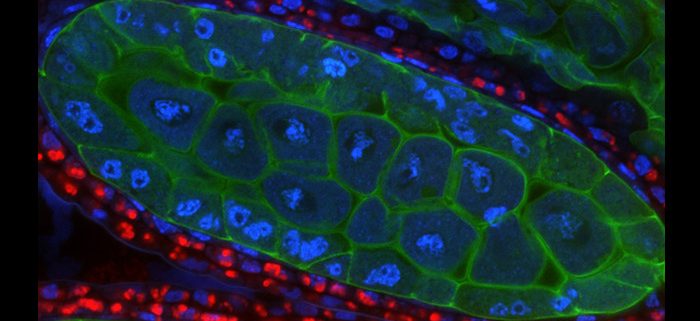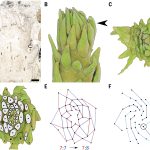Cell differentiation in the tapetum
Wu et al. investigate tapetum differentiation in Arabidopsis thaliana. The Plant Cell (2023).
By Yue Lou
Background: The tapetum is the innermost layer of the four cell-layered anther wall. In Arabidopsis, the tapetum undergoes cell differentiation and transitions into secretory cells. Most nutrients for microspores and/or developing pollen grains are produced by, stored in, and transported from this secretory tapetum. Therefore, the tapetum of flowering plants plays a critical role in mature pollen production. DEFECTIVE IN TAPETAL DEVELOPMENT AND FUNCTION 1 (TDF1) is a tapetum-specific transcriptional factor. In tdf1 mutants, tapetal cells fail to differentiate after the establishment of the anther wall, leading to complete male sterility.
Question: How does TDF1 promote tapetum differentiation?
Findings: We found that the loss of TDF1 function induces supernumerary cell divisions and disturbs the subsequent differentiation in the tapetum. We show that the TDF1-SKS18 module regulates the L-ascorbic acid (AsA) oxidation pathway and that the TDF1-VTC1 module regulates AsA biosynthesis. Genetic analyses supported the notion that TDF1 inhibits extra tapetal cell divisions via mediating proper AsA contents. Further studies revealed that AsA-mediated reactive oxygen species (ROS) homeostasis modulates cell divisions in the tapetum. Thus, our findings reveal that TDF1-regulated AsA concentrations contribute to the transition from division to differentiation of tapetal cells through governing ROS homeostasis.
Next steps: We will further investigate other pathways or mechanisms that function in tapetal cell division and/or differentiation. Moreover, we will explore whether other SKS members are required for the regulation of tapetum development.
Si-Yuan Wu, Ling-Li Hou, Jun Zhu, Yi-Chen Wang, Yu-Ling Zheng, Jian-Qiao Hou, Zhong-Nan Yang and Yue Lou. (2023). Ascorbic acid-mediated reactive oxygen species homeostasis modulates the switch from tapetal cell division to cell differentiation in Arabidopsis. https://doi.org/10.1093/plcell/koad037




